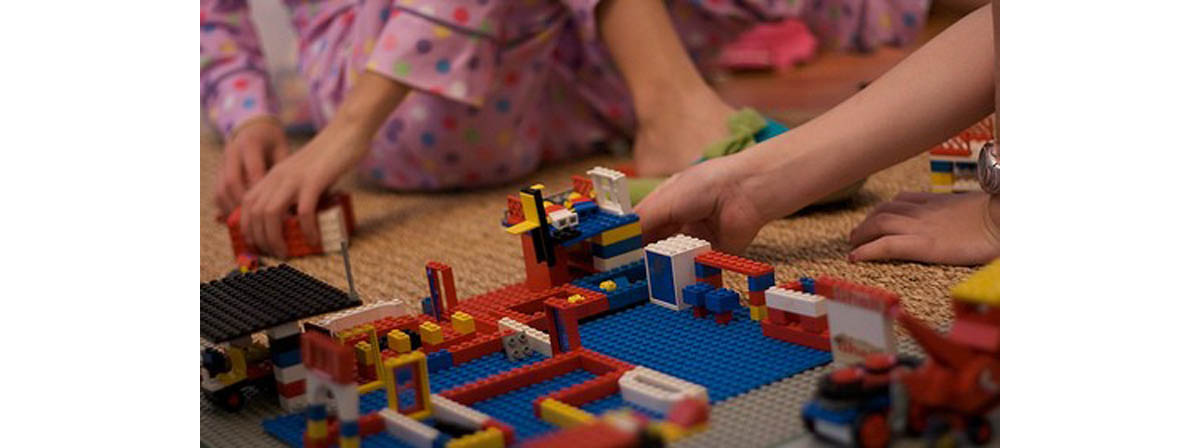Table of Contents
Lego Connects
Stop thinking about toys as something your kids play with while you do chores around the house or check your emails. Bonding works best if you do it over something that is truly meaningful to your child, and collective play is one of the most powerful ways to connect with your child.

Lego provides a wonderful way for you and your child to build on that pre-existing connection. So first, dump those bricks and accessories onto your floor and then get busy, together with your kid. Don't force your creative ideas upon your offspring, but play the supporting role and help your child realize his own building ideas.
Once you have created a structure you are happy with together — whether it's a house, castle, garage, nursery, school, police station, or something else — get into role playing using those little Lego guys.
Lego encourages shared play between siblings and friends as well. Big projects take ages to complete (if they are ever really done), and tackling them together just adds to the fun, but also teachers sharing and compromising.
Social Play
Social play is, after all, one simple but effective way to allow children to express their feelings and explore society. If something is bothering your child at school, in relationships with relatives, or at home, role play with Lego folks can eliminate some of that tension and give rise to an easy expression of emotions.
If you are facing a potentially stressful situation in your family, you can initiate this type of role play. Are you moving? Having a new baby? Is your child starting school? Did you recently have a death in the family? Acting your scenario out with Lego can be therapeutic and much less forced for a child than "sitting her down for a chat".
Creative And Mathematical Thinking
Lego's obvious strong point point is that building new, stable structures from scratch encourages both creative and mathematical thinking. You just don't get that level of creativity with ready-made playhouses. Parents can help the younger crowd build houses that are strong and don't fall down easily, while enjoying figuring out the more complex, technical Lego projects together with older kids.
You can also actually use Lego in your child's school work. We're a homeschooling family, and we've used Lego cubes of different colors to master number bonds.
You can do the same with fractions and multiplication. A very simple idea is to make "stairs" with Lego — first one brick, then two, three, and four next to that until you reach 10. This shows what increasingly large numbers actually mean. Later on, you can use a single brick to represent a higher number such as 10 or 100.
Another idea is to build a simple structure and then asking your child to guess how many bricks were used. You can also set out a number of bricks and ask how many different structures one can build with them.
It's clear that parents and kids can do much more with Lego than build houses. How you use Lego's creative possibilities in your house is totally up to you and your children.
- Photo courtesy of NASA HQ PHOTO by Flickr : www.flickr.com/photos/nasahqphoto/5161635695/
- Photo courtesy of William Booz by Flickr : www.flickr.com/photos/billbooz/4061440448/


Your thoughts on this